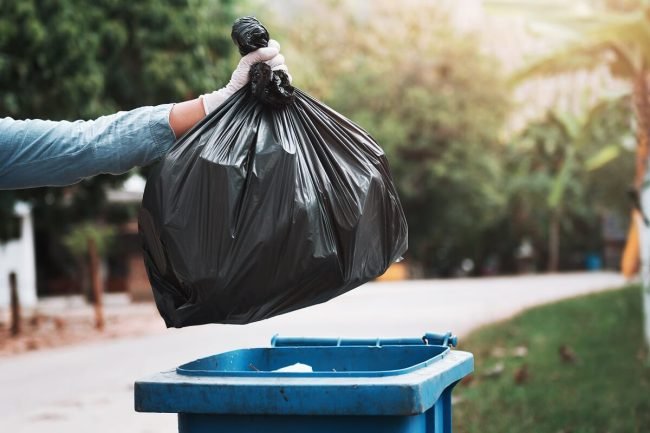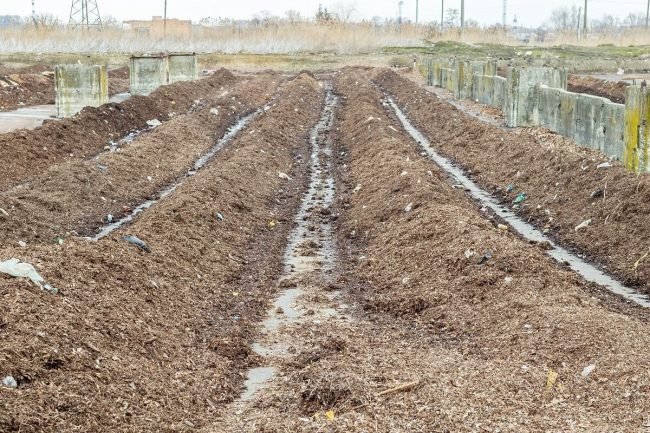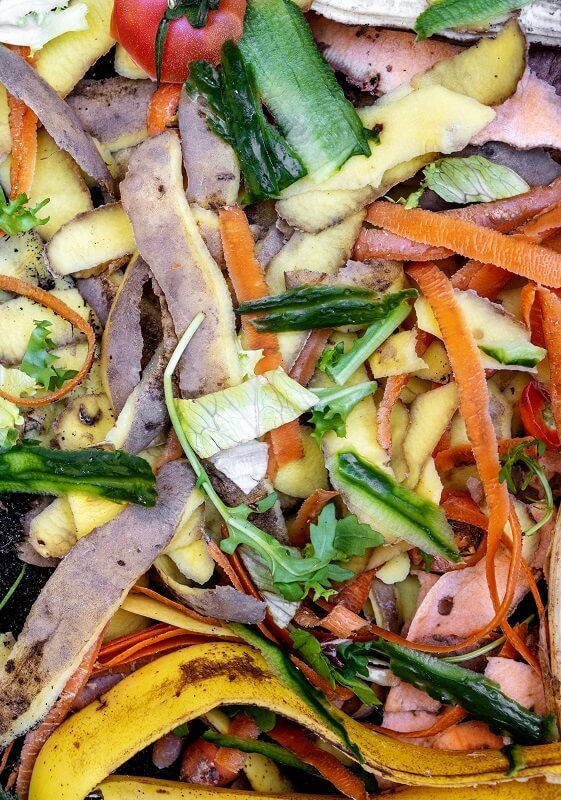A moonshot is a big idea designed to tackle a problem that seems impossible but is worth the effort because it’s a noble goal.
The problem we wanted to tackle was food waste ending up in landfills and composting is the means we’re using to try to get the world where we want to be–with no more excess food going to waste.
Let’s take a closer look at the situation…
Composting: An Elegant Solution to a Mounting Problem
The Problem
Limited Landfill Space and Methane Emissions
Whether it’s “lost food”–any kind of edible food that goes uneaten–or food waste–a type of food loss that includes half-eaten meals, scraps from meal prep, expired food thrown out, and produce deemed too “ugly” by retailers to sell–food waste is a serious problem.
In fact, it creates several problems: unnecessary draining of energy resources and billions of dollars in waste management costs, for example.
But the problem we’re focused on is the environmental damage.
Anaerobic Composting Produces Methane
Roughly 24 percent of the material in landfills is food waste. Although this type of waste does decompose relatively quickly, due to a lack of oxygen in the giant pile of trash (this is called anaerobic composting), bacteria in the waste produce methane gas, which is highly flammable and dangerous if allowed to collect underground.
Methane is also a known greenhouse gas, contributing to global climate change and the increase in temperature of the earth’s atmosphere and oceans.
Methane is very effective at trapping heat, making it a very potent greenhouse gas. The Global Warming Potential (GWP) factor – a measure of how much heat the emissions of one ton of gas will absorb over a certain period of time, relative to one ton of carbon dioxide (CO2) – gives methane a score between 27-30, giving it 30 times the warming power of CO2 over a 100 year period.
This is why diverting food waste from landfills, and preventing the release of methane, is so important.
While many landfills are equipped to capture methane for energy, many still are not, and even those that are face the issue of methane leakage, with some methane still escaping into the atmosphere.
Learn more about food waste and methane.
Landfills are smelly eyesores with associated health complications for the people who live near them, and eventually we will run out of room to create new landfills.
In short, landfills are an outdated solution to the problem of waste and whenever we can divert trash away from them, we should.
Aerobic Composting Produces Biogenic CO2
On the other hand, breaking down food waste via composting utilizes oxygen and is referred to as aerobic composting. Aerobic composting produces carbon dioxide (CO2) but, although CO2 is also a greenhouse gas, the CO2 released during aerobic composting is biogenic (resulting from living organisms), not anthropogenic (resulting from human activity), and is not considered in greenhouse gas calculations.
Biogenic CO2 is part of the existing carbon cycle (as opposed to the carbon that has been trapped underground in fossil fuels) and will be resequestered (reabsorbed) during plant regrowth.
In other words, composting is just releasing the CO2 that was used by plants during the growing cycle.
The Solution
Composting
What is Composting and How Does it Work?
Composting by humans is as old as agriculture. Essentially a means of speeding up the natural decomposition process, composting utilizes the right balance of moisture, air, and heat for soil microbes to consume the organic material. The composting process converts the waste into stable soil carbon, while retaining water and nutrients from the original organic materials.
This can take several forms, from a backyard compost pile to large-scale operations. The latter may involve either windrow, in-vessel, and aerated static pile composting.
Learn more about the three composting methods.
Benefits and Uses of Compost
The result is beneficial compost filled with nitrogen, phosphorus, and potassium, which are primary plant nutrients. Traces of other essential elements such as iron, zinc, calcium and magnesium can also be found. Compost also helps soil retain water so that farmers and gardeners don’t have to use as much to produce healthy crops.
Once compost has sufficiently matured–meaning it has turned into dark material known as humus–after a month to a year, it can be used:
as mulch
in garden beds
spread across lawns
to feed potted plants
around fruit trees
in crop beds.
Diverting and composting go hand-in-hand. Besides helping boost and sustain food production, composting can also help pull carbon out of the atmosphere, combating the emission of greenhouse gasses, and replace polluting chemical fertilizers, protecting public health.
What Can and Can’t Be Composted?
A wide range of things can be composted, especially when an industrial or municipal facility is handling the composting. This includes:
fruits and vegetables
bread
nuts
beans
meat
poultry
seafood
tea bags
eggshells
coffee grounds
leaves
house plants
paper and cardboard
wood chips
hay and straw
ashes
Exceptions include fats and oils, feces, diseased plants, black walnut leaves or twigs, and a few other types of items.
How You Can Do Your Part with Moonshot Compost
Everybody can divert food waste and help create valuable compost: office workers, restaurant employees, students and teachers, doctors and nurses, and more.
All you need to do is drop your food waste in a Moonshot-provided bin–check the list of compostables–and we handle the rest!
We provide all the supplies, come to you to collect, and report your diverted organics to you. If you wish, you can even claim back the compost you’ve earned for your own use.
We customize a plan for your business and your schedule to maximize convenience and flexibility.
And we ensure that all the organic materials we collect are taken to composting facilities in your area.









